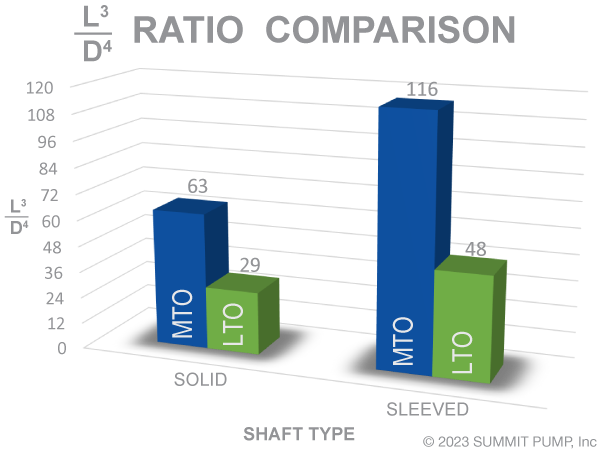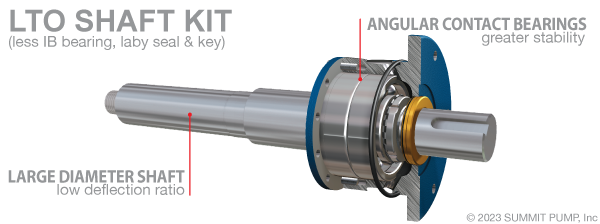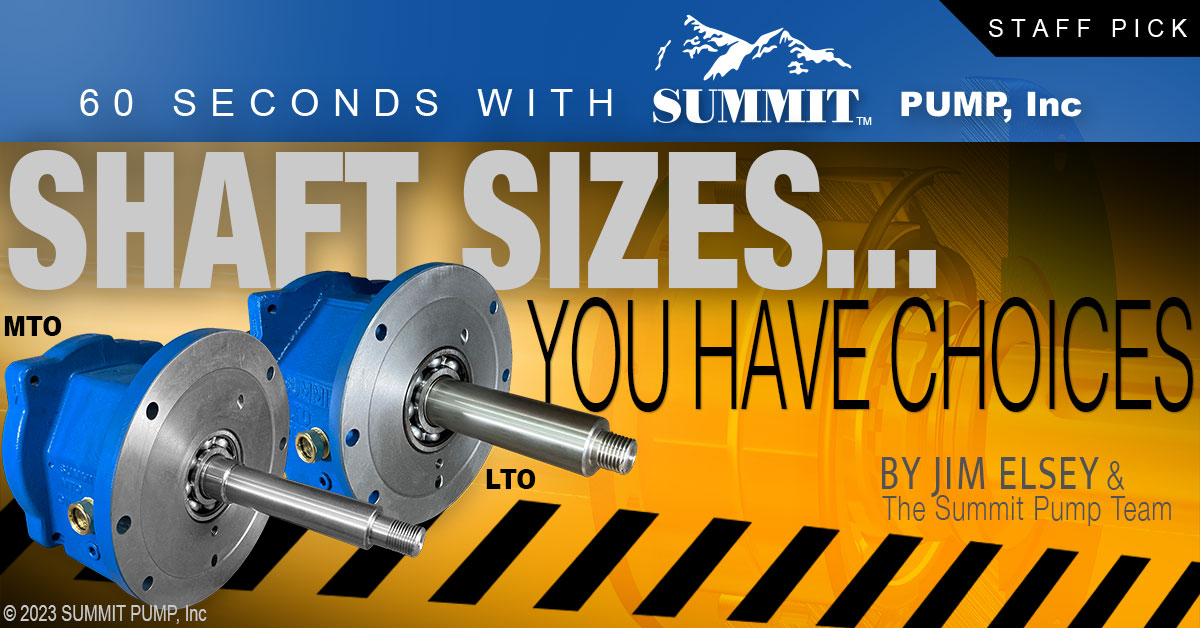You Have ChoicesThe interchangeability amongst ANSI mid-size pumps, offers you a choice of selecting an
MTO (medium) or an
LTO (large) frame size. Most often your competitor will choose the MTO over the LTO version because it is less expensive. However, the astute salesperson will favor the LTO when leveraging
reliability,
durability and the
lower total cost of ownership (TOC). I will acquiesce that some people will never be convinced regarding the “upsell”. At times I agree, depending on the pump duty and the duty cycle, that sometimes going cheap is indeed acceptable.
What is the Difference?The main difference between an MTO and LTO pumps are the
shaft diameters. The MTO uses a 1-3/4” mechanical seal, whereas the LTO uses a 2-1/8” mechanical seal.

Of course, this also affects the bearing sizes, both inboard (radial) and outboard (thrust), coupling hub size, and consequently the stuffing box size.
The larger shaft diameter directly correlates to a lower Shaft Deflection Index (L
3/D
4) rating as well. The lower the number, the less likely the shaft will deflect. See below chart:

All these “bigger sizes” do add up to more cost and a higher price, but they can also translate directly to higher reliability; meaning longer intervals between maintenance and lower total cost overall.
When to Choose the LTO?Before you decide, first consider some of the conditions the pump will experience. Look at the application, the fluid, the curve, the design point(s) and the duty cycle. Discuss with your customer where and for how long they will operate on the curve. Also ask if the customer had previous issues due to operations away from BEP?
Does the pump operate 24/7 or 5 minutes a month? What is the energy level involved? (More important on a 50 HP application than 5 HP). Is the duty critical? Is there a backup pump in place?

We Recommend LTO Over MTO When :
- Engine driven (intermittent torque application from combustion engine)
- Belt drive (high cyclic stresses)
- Conditions (fluids) that push the pump into a sleeved shaft configuration (higher L3/D4)
- Applications with fluids that are viscous, non-Newtonion or high specific gravity (approach shaft BHP limits)
- Fluid conditions /properties that push for a more sophisticated mechanical seal application (bigger seal)
- Extreme temperature applications; over 325°F or under minus 20°F
- Variable speed applications; especially if it will run at low speeds at or below 900 RPM or has abrupt changes in speed. (Torque varies inversely with speed)
- Applications with very low suction pressures or abrupt fluctuating changes in suction pressure. (Axial thrust increases as suction pressure decreases on end suction pumps)

